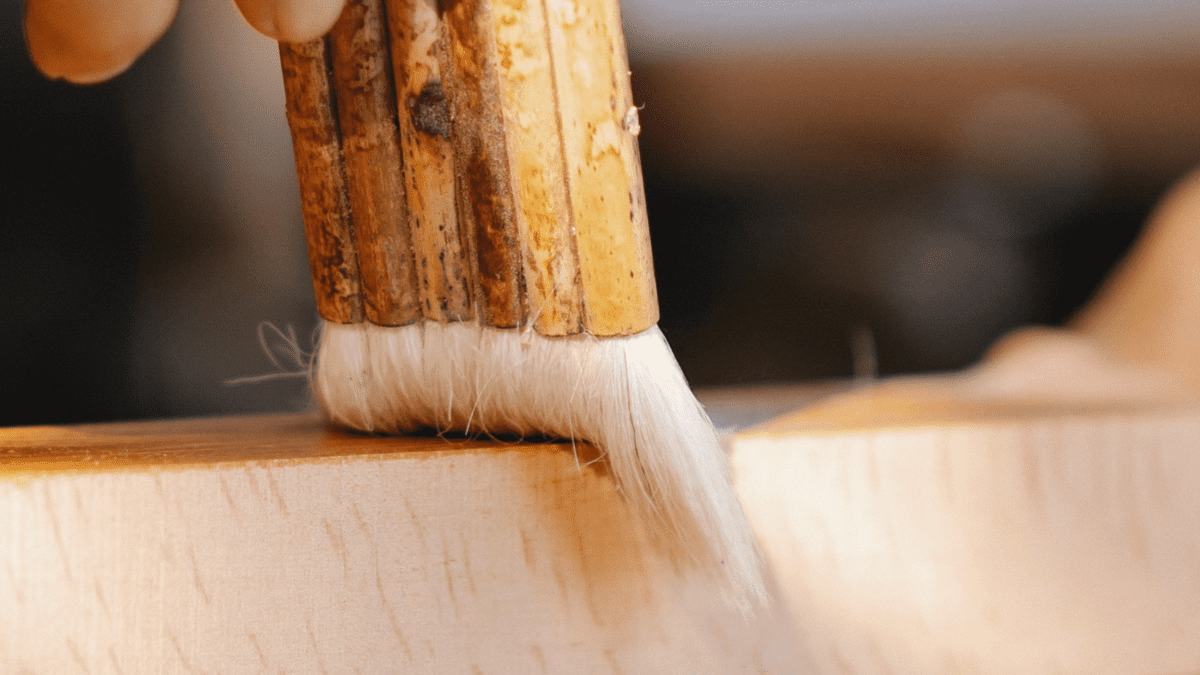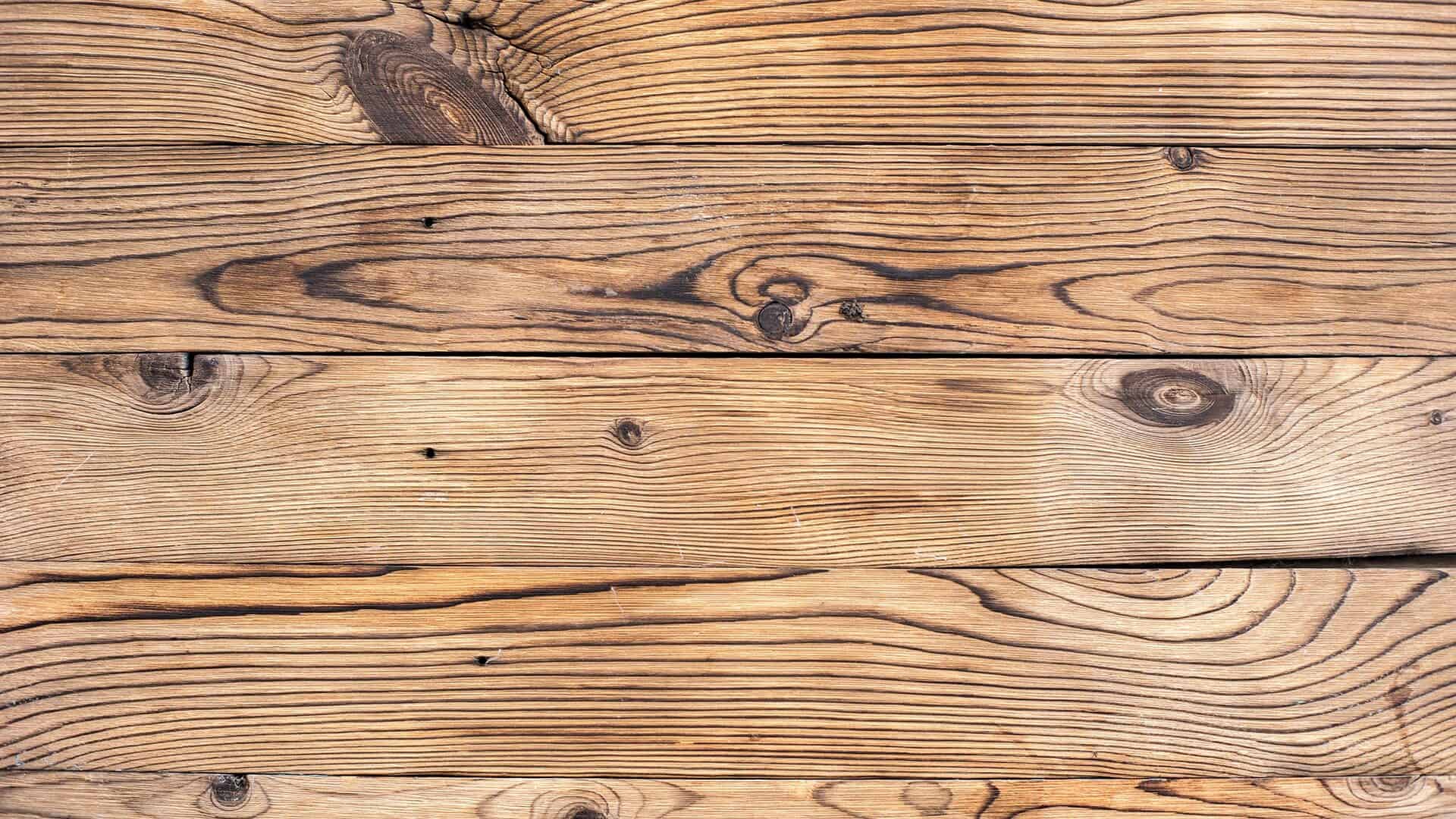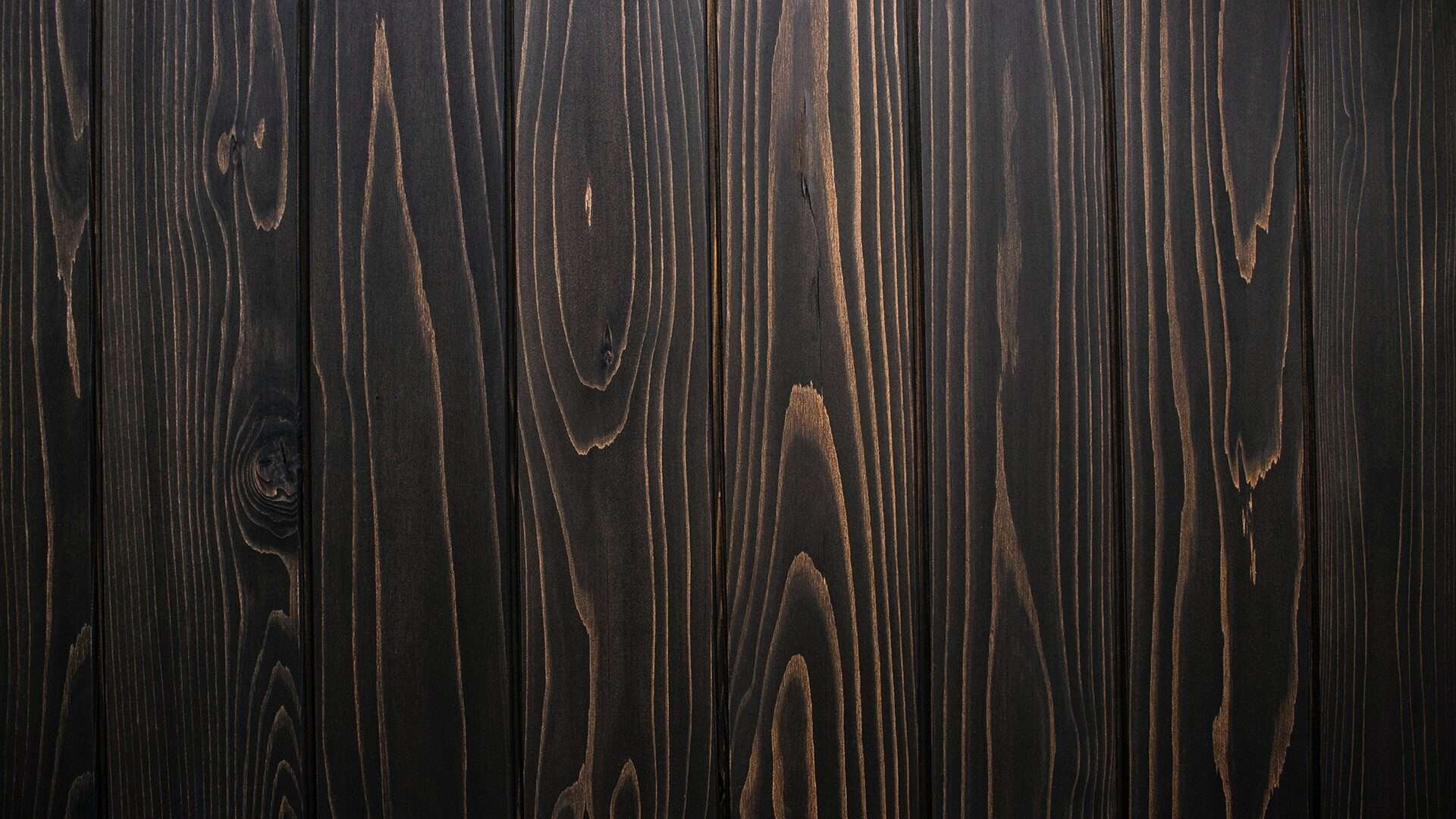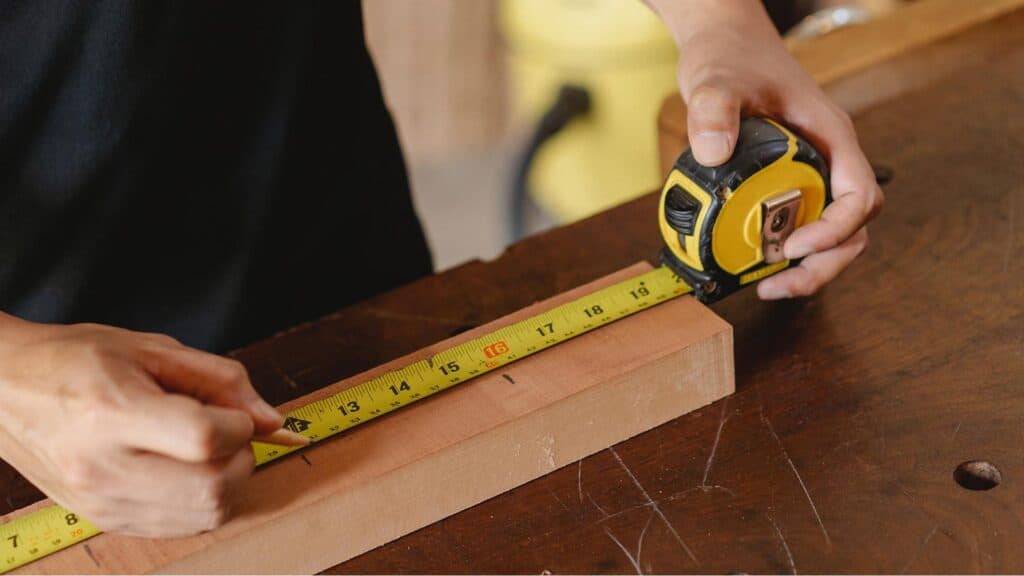It’s important to get your stain and polyurethane application right, or you could end up with an inferior finish. In this article, we will discuss how long you should wait before applying polyurethane to your stained wood project. We’ll also cover some things that can impact drying time for the stain, as well as the different types of polyurethane that are available. Also, take a look at this article on wood glue drying time.
Table of Contents
How long does it take stain to dry?
It typically takes about 24 hours for stain to dry completely. However, there are a few things that can impact the drying time of your stain. Wood type, humidity, and temperature can all affect how long it takes for your stain to dry.
To be safe, it’s always best to wait at least 24 hours before applying polyurethane to your stained wood. This will ensure that the stain is completely dry and won’t react with the polyurethane.
What to do before applying the wood stain?
Prior to applying wood stain, you can do a moisture test with a moisture meter. This will tell you the exact percentage of moisture in the wood. Most stains need to be applied when the wood moisture content is between six and eight percent.
If your wood is too dry, it won’t absorb the stain properly. If it’s too wet, the stain can raise the grain of the wood and cause other issues.
You should also sand your wood before applying stain. This will help create a smooth surface for the stain to adhere to. Start with coarse grit sandpaper and work your way up to a finer grit.
How to know when the stain is fully dry?
One way to test if your stain is dry is to touch the surface of the wood. If the stain feels tacky or wet, it’s not ready for polyurethane. Smelling the wood is also a good way to test for dryness. If the stain has a strong odor, it’s likely not yet dry. Allow the wood stain to dry completely before you apply polyurethane.
What type of stain should I use?
There are two types of stains you can use on your wood projects: oil-based and water-based.
Oil-based stains take longer to dry than water-based stains, but they provide a more durable finish. Water-based stains dry quickly, but they don’t last as long as oil-based stains. It is important to understand the difference prior to beginning your project in order to choose the right type of stain.
The brand of the stain can also impact the drying time. Some brands dry faster than others. If you are unsure how long your particular brand of stain will take to dry, it’s best to consult the manufacturer’s instructions.
How long does it take water-based stains to dry?
Water-based stains typically take about two hours to dry. The reason for this is that they are thinner than oil-based stains, so they penetrate the wood more quickly. This is not a steadfast rule, however, as some water-based stains can take up to four hours to dry. As said before, the brand of the stain can also impact drying time.
How long do oil-based stains take to dry?
Oil-based stains can take anywhere from six to eight hours to dry. The thicker consistency of oil-based stains means that they don’t penetrate the wood as quickly as water-based stains. As a result, it takes longer for them to dry completely. Although the finished product is more durable, oil-based stains can also be a bit more difficult to work with.
What if the stain doesn’t dry?
Drying time when staining wood can be impacted by a number of factors. Here are some of the most common reasons why your stain might not be drying:
1. You didn’t sand the wood before applying the stain.
If you didn’t sand the wood before applying the stain, the surface may be too rough for the stain to properly adhere to. This can cause the stain to take longer to dry, or not dry at all.
To repair this problem, simply sand the wood first. Use coarse-grit sandpaper to begin, then move up to a finer grit as needed. You will know the wood is ready for staining when it feels smooth to the touch.
Once you have sanded the wood, apply the stain and allow it to dry according to the manufacturer’s instructions.
If your stain still isn’t drying, there could be another issue at play. Continue reading for more information.
2. The wood was too dry or too wet when you applied the stain.
If the wood was too dry when you applied the stain, it won’t absorb properly. This can cause the stain to take longer to dry, or not dry at all. Conversely, if the wood was too wet when you applied the stain, it can raise the grain of the wood and cause other issues. In this case, you will need to remove the stain and start over.
To avoid this problem, make sure the wood is at the correct moisture level before applying the stain. Use a moisture meter to test the wood if you are unsure if it is too dry or too wet.
3. You used an oil-based stain instead of a water-based stain.
As we mentioned before, oil-based stains take longer to dry than water-based stains. If you used an oil-based stain, it will likely take six to eight hours for it to dry completely.
If you need your project to be done more quickly, we recommend using a water-based stain instead. Water-based stains typically dry in two hours or less.
4. The brand of stain you used has a longer drying time.
As we mentioned before, some brands of stain take longer to dry than others. If you are unsure how long your particular brand of stain will take to dry, it’s best to consult the manufacturer’s instructions.
5. The temperature was not ideal when you applied the stain.
The temperature can have a big impact on drying time. If it is too cold, the stain will take longer to dry. If it is too hot, the stain can dry too quickly and cause issues.
For best results, apply the stain when the temperature is between 60 and 80 degrees Fahrenheit.
6. The humidity was not ideal when you applied the stain.
Similar to temperature, humidity can also impact drying time. If the air is too humid, the stain will take longer to dry. If the air is too dry, the stain can dry too quickly and cause issues.
For best results, apply the stain when the humidity is between 40 and 60 percent.
7. Ventilation was not adequate when you applied the stain.
If the area you are working in is not well-ventilated, it can impact the drying time of the stain. Make sure you are working in a well-ventilated area, and that there is plenty of airflow.
You can improve ventilation by opening windows or using fans. Just make sure not to point the fan directly at the stain, as this can cause the stain to dry too quickly.
8. The coat of stain was too thick.
If you applied too much stain, it might take longer to dry. To avoid this issue, use a thin layer of a stain rather than a thick coat.
It’s preferable to apply several thin coats of a stain rather than one thick coat. This will assist the stain in drying more uniformly and minimize problems.
9. Outdoor stains can be impacted by weather conditions when compared to indoor.
The weather can have an impact on the drying time if you are staining something outside. If it is too windy, the stain may dry prematurely, causing difficulties. If it is raining, the stain will take longer to dry. To prevent this issue, only apply the stain when the weather conditions are favorable.
Interior vs. Exterior Wood Stains
The difference between interior and exterior wood stains is mainly in durability and lifespan. Interior wood stains are not as durable as exterior wood stains because they don’t have to withstand the harsh elements that exterior wood stains do. Interior and exterior stains also differ in their drying time.
Exterior wood stains need to be more durable to protect the wood from UV rays, moisture, and temperature changes. For this reason, exterior wood stains usually take longer to dry than interior wood stains.
Interior wood stains can be water-based or oil-based, while exterior wood stains are usually oil-based. Water-based stains dry more quickly than oil-based stains, but they are not as durable.
How many coats should I apply?
The number of coats you need to apply will depend on the type of wood stain you are using, the wood you are staining, and your personal preference. If you are using a water-based wood stain, we recommend applying two coats. If you’re using an oil-based stain, we recommend three applications.
Applying multiple thin coats is better than applying one thick coat. This will help the stain dry more evenly and prevent issues. Thick coats of stain can be more difficult to work with and are more likely to cause problems such as uneven drying, pooling, and runs.
What is a lacquer wood stain?
Lacquer wood stain is a type of oil-based stain that dries very quickly. It is typically used for small projects where you need a quick turnaround time.
The main downside of lacquer wood stains is that they are not as durable as other types of stains. They also have a strong odor, so it is important to work in a well-ventilated area.
Lacquer wood stains are available in a variety of colors, but they are not as widely available as other types of stains.
What is a gel stain?
Gel stains are a type of oil-based stain that is thicker than traditional stains. They are typically used for staining vertical surfaces, such as cabinets and doors.
Gel stains can be difficult to work with because they are thick and can be challenging to spread evenly. It is important to read the directions carefully before use.
Gel stains come in a wide range of hues, however, they are not as common as other stains.
What is Cabot oil-based stain?
Cabot oil-based stain is a type of exterior wood stain that is very durable and long-lasting. It is available in a wide range of colors, including clear stains.
Cabot oil-based stains dry slowly, so it is important to allow adequate time for the stain to dry before using the furniture or applying a topcoat.
What to do with excess stain?
If you have too much stain, you can remove it with a clean cloth before it dries. Once the stain has dried, it will be more difficult to remove.
You can also apply a top coat over the excess stain to protect it from wear and tear. Excess stain can also be sanded away once it has dried.
How to apply a stain coat?
When applying a stain coat, it is important to work in small sections and to avoid going over the same area multiple times. Applying too much pressure can cause the stain to pool and create an uneven finish on the wood’s surface.
It is also important to wipe away any excess stain with a clean cloth before it has a chance to dry. Allowing the stain to dry before wiping it away can result in a darker, more uneven finish.
The natural wood grain will absorb the stain differently, so you may need to go over some areas multiple times to get the desired look.
Once you have finished applying the stain, allow it to dry completely before moving on to the next step.
FAQ’s
Q: Can I use a hairdryer to speed up the drying time?
A: Yes. You can use a hairdryer on the low setting to speed up the drying time. Just make sure not to hold it too close to the stain, as this can cause the stain to dry too quickly and unevenly.
Q: What should I do if my stain is taking too long to dry?
A: If your stain is taking longer than expected to dry, you can try using a dehumidifier or fan to improve ventilation. You can also consult the manufacturer’s instructions for tips on how to speed up the drying time.
Q: What should I do if my stain is not drying at all?
A: If your stain is not drying, it could be because the wood is too wet. You can try using a hairdryer or creating more airflow to speed up the drying time.
Q: Can I apply a second coat of stain if the first coat is not dry?
A: No. You should not apply a second coat of stain until the first coat is completely dry. Otherwise, you run the risk of the stain not drying properly or evenly.
Q: What should I do if my stain is not drying evenly?
A: If your stain is not drying evenly, it could be because the wood is too wet or the coat is too thick. You can try using a hairdryer or fan to improve ventilation or applying a thinner coat of stain.
Q: What should I do if my stain is drying too quickly?
A: If your stain is drying too quickly, it could be because the temperature or humidity is too high. You can try using a humidifier to add moisture to the air or move to a cooler location.
Summary
In summary, The amount of time it takes for stain to dry depends on many factors, such as the type of stain, the wood, the weather, and the ventilation. Oil-based wood stains usually take longer to dry than water-based wood stains. It takes around 24 hours for most stains to dry completely. If you are unsure how long it will take for your stain to dry, consult the manufacturer’s instructions or test a small area first.
If drying is taking too long then you can use a hairdryer on the low setting to speed up the drying time if needed. Do not apply a second coat of stain until the first coat is completely dry. If your stain is not drying evenly, it could be because the wood is too wet or the coat is too thick. Contact a professional if you have any concerns about your project.





